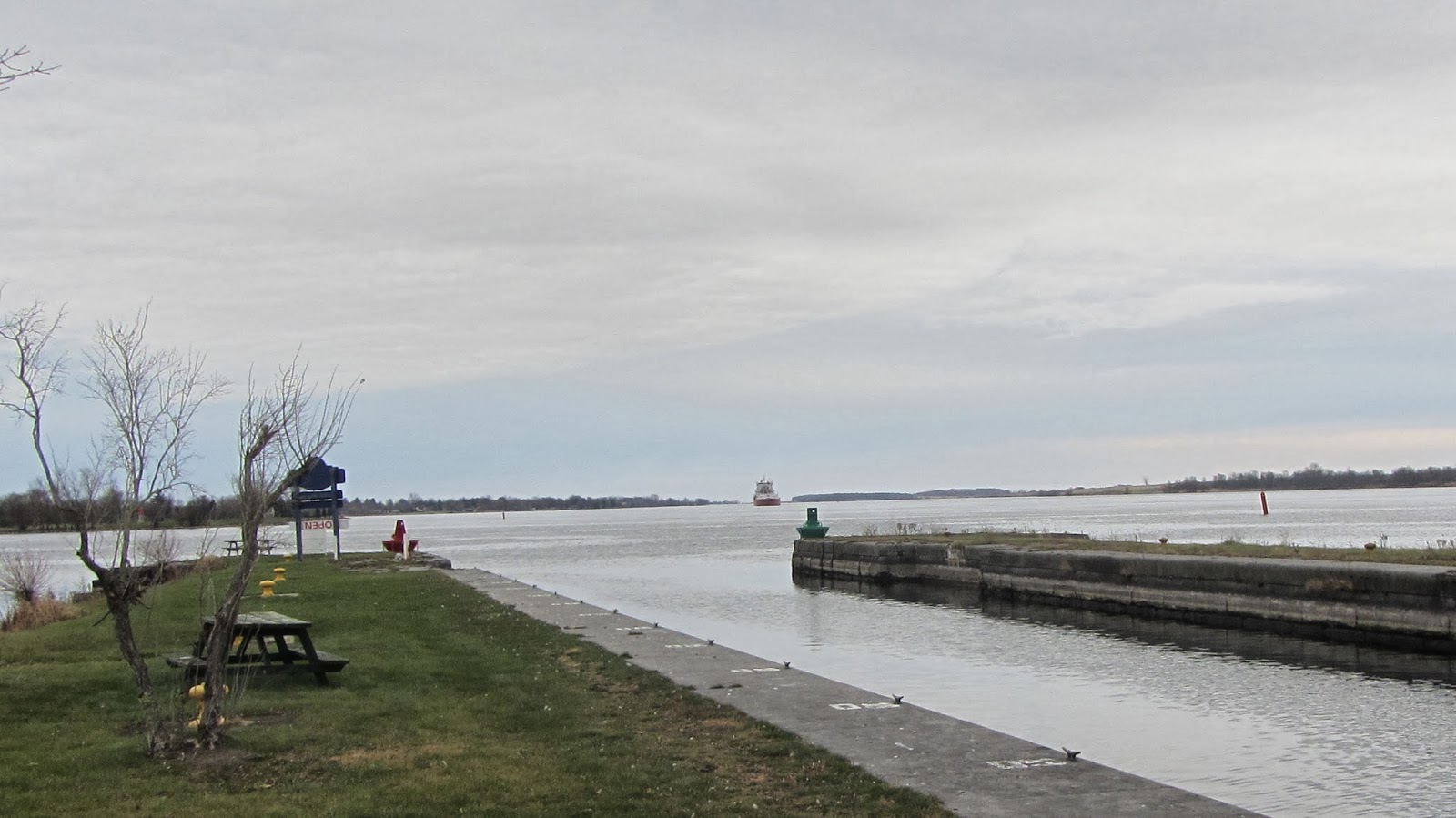Ice maybe great in a soft drink or an after work highball but this winter, ICE has been a CAPITAL pain in the BUTT for Great Lakes mariners that usually remain active, moving essential cargos to key ports from the Soo on the St. Mary's River through to Nanticoke's oil refinery on Lake Erie. Passages that normally would take a matters of hours, have been extended by several days even with to constant aid by Canadian and American coast guard ICEbreakers. However, despite all their timeless and gallant efforts, Canadian ship owners have complained that more resources should have made available this winter, (like who knew this was to be the worst winter in 20 years?). Regardless, as the end of March approaches, ship owners, skippers and crews are itching to get the new sailing season underway, only to be delayed once again to due to ICE. Generally the St. Lawrence Seaway opens March 28 but due to the over abundance of ICE, the opening has been delayed to the 31st. The Soo Locks opened as planned on March 25, but for the first time in years, the locks remained idle, leaving workers 'scared ship-less' (or NOT) due to the thick ICE conditions out on Lake Superior and the ICE jammed channels of the St. Mary's River for those ships that would normally transit northwest to the Soo from the southern lakes. The Welland Canal will be opening today but it'll be hard to predict when the first downbound will enter Lock 8 in Port Colborne from Lake Erie since almost all of the lake remains frozen over. As the saying goes,' Time is Money' and delays, whether weather is to blame (no pun intended, really), increased costs sooner or later effects everyone's wallet or debit card.
To ease the pain and help kick-start the shipping season, this week the Canadian Coast Guard dispatched two additional ICEbreakers, (the 272.2' light ICEbreaker MARTHA L. BLACK, snapped in a floating drydock in Hamilton by my friend Shaun last summer, and the 318' medium Arctic ICEbreaker PIERRE RADISSON into the system prior to the Seaway's opening. Yesterday, while searching the whereabout of these two ICEbreakers, I noticed the RADISSON was west of the Eisenhower Lock heading presumably to the Coast Guard base in Prescott. YES!! So almost immediately, Tanner and I were off motoring down to the 416 hoping to get a few snaps of the large polar ICEbreaker in action along the St. Lawrence River. No such luck as in turned out my source was somewhat out dated, and the PIERRE RADISSON was actually motoring beyond Prince Edward County on Lake Ontario making her way to Port Weller. (check out this coast guard snap: http://www.marinfo.gc.ca/images/Flotte/Pierre_Radisson.jpg)
What I did see though at the Coast Guard base was the laid up buoy tender CCGS TRACY, and a lot of ICE which was held in position by a boom that crossed to the river to the American side. The boom, which is made of wood floats and linked together with chains is placed in the river above the Seaway hydro dam at Iroquois in December to prevent ICE build-up and ensure an even ICE formation on the river. In the Spring and when the ICE has melted, the boom is removed before the Seaway shipping season commences. Such is not the case this spring as melting has not occurred because it's been too cold up here in the Great White North, and most likely the tug STEEL HEAD (in photo below) was used to open up a channel for the RADISSON to continue her upbound passage.
There didn't appear to be much activity around the CCGS TRACY when I snapped her last May at the Prescott coast guard dock. The 180' TRACY was built at Port Weller Dry Docks in 1967 and for much of her career, the multi-task shallow draft vessel was stationed at Sorel, QC. Though primarily used to service navigation aids along the St. Lawrence River, the TRACY is ICE-strengthed to allow light icebreaking duties. Whether or not she may have been capable enough to offer the additional resources needed to meet the ship owners outcries this winter, who knows. Meanwhile, the proud and patient TRACY sits and waits for her next assignment or sold for scrap. As for Tanner, whether it's refreshing dip in the St. Lawrence or sniffing for his ball along the shoreline, he too is flexible and goes with the flow. N-ICE Dog c):-))




































